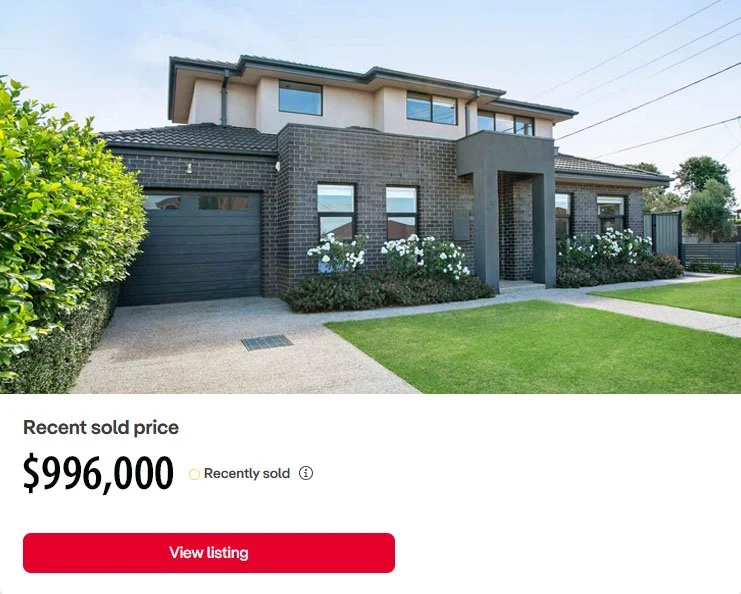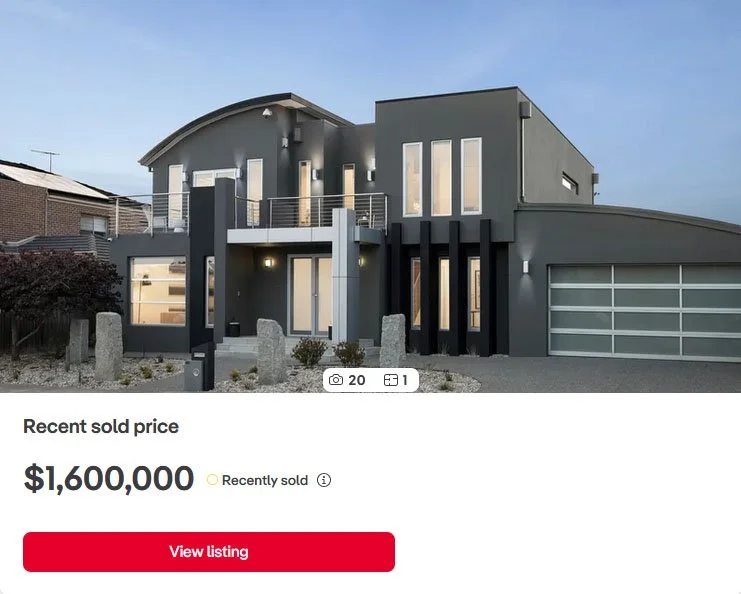Case Study: OPGR - 1028
Transforming a Property for Maximum Market Value
Project Overview:
Our client owned a property valued at $860,000 and was looking to maximise its sale price before putting it on the market. With a strategic pre-sale renovation investment of $30,000, we elevated the property’s appeal, leading to a successful auction day sale of $996,000—a remarkable $136,000 increase in value.
The Challenge:
The property had strong fundamentals but needed key improvements to enhance its presentation and attract competitive buyer interest. The goal was to achieve the highest possible return on investment while keeping the renovation budget efficient and impactful.
Our Approach:
We carefully planned and executed a targeted renovation strategy, focusing on:
✔ Cosmetic Enhancements: Fresh interior and exterior paint to modernise and brighten the space.
✔ Kitchen & Bathroom Updates: Minor upgrades, such as new fixtures, cabinet refreshes, and updated hardware, to add a contemporary feel.
✔ Flooring Improvements: Rejuvenating flooring by re-sanding and polishing.
✔ Curb Appeal Boost: Landscaping enhancements, new entryway fixtures, and a deep clean to create an inviting first impression.
✔ Staging & Styling: Professional staging to highlight the property’s potential and create an emotional connection with buyers.
The Results:
✅ Original Valuation: $860,000
✅ Renovation Investment: $30,000
✅ Final Sale Price: $996,000
✅ Total Value Increase: $136,000
✅ ROI on Renovation: 353%
Conclusion:
This case study highlights the power of strategic pre-sale renovations in maximising property value. By investing in the right areas, we were able to generate strong buyer interest and secure an outstanding result on auction day.
Case Study : OPGR - 1043
Maximising Sale Price with a Strategic Pre-Sale Renovation
Project Overview:
Our client owned a property valued at $1,350,000 and was looking to maximise its sale price before putting it on the market. With a strategic pre-sale renovation investment of $85,000, we elevated the property’s appeal, leading to a successful sale of $1,600,000—a remarkable $250,000 increase in value.
The Challenge:
The property had strong fundamentals but needed key improvements to enhance its presentation and attract competitive buyer interest. The goal was to achieve the highest possible return on investment while keeping the renovation budget efficient and impactful.
Our Approach:
We carefully planned and executed a targeted renovation strategy, focusing on:
✔ Cosmetic Enhancements: Fresh interior and exterior paint to modernise and brighten the space.
✔ Kitchen & Bathroom Updates: Minor upgrades, such as new fixtures, cabinet refreshes, and updated hardware, to add a contemporary feel.
✔ Balconies: Rejuvenating of floor
✔ Curb Appeal Boost: Landscaping enhancements, new entryway fixtures, and a deep clean to create an inviting first impression.
✔ Staging & Styling: Professional staging to highlight the property’s potential and create an emotional connection with buyers.
The Results:
✅ Original Valuation: $1,350,000
✅ Renovation Investment: $85,000
✅ Final Sale Price: $1,600,000
✅ Total Value Increase: $250,000
✅ ROI on Renovation: 194%
Conclusion:
This case study highlights the power of strategic pre-sale renovations in maximising property value. By investing in the right areas, we were able to generate strong buyer interest and secure an outstanding result on auction day.
Why Pre Sale Renovation?
-
✽
Renovations can increase your home’s market value, allowing you to set a higher asking price and maximise your return on investment.
-
✽
Updated and well-maintained properties are more attractive to potential buyers, increasing the pool of interested parties and potentially sparking a bidding war.
-
✽
Homes in good condition typically sell quicker than those needing repairs, reducing the time your property sits on the market.
-
✽
Curb appeal matters. Updating the exterior, entryway, and landscaping can create a strong first impression, encouraging buyers to view the property.
-
✽
In areas with many listings, a renovated property can stand out from the competition, giving you an edge over similar homes.
-
✽
A well-maintained and updated property reassures buyers of the home’s quality and the seller’s transparency, fostering trust.
FAQs
-
A: The amount varies depending on your budget and property value, but a good rule of thumb is to spend around 5–10% of your expected sale price. Focus on high-impact areas like kitchens, bathrooms, and the living space.
-
A: While renovations typically increase a property's value, the final sale price depends on market conditions, location, and buyer demand. Renovations enhance your chances of getting closer to your asking price and selling faster
-
A: Cosmetic updates like painting, new fixtures, and improved lighting often provide a better ROI than major structural renovations. However, if your property has significant issues (e.g., roofing, plumbing), addressing those is essential to avoid deterring buyers.
-
A: Ideally, complete renovations 2–3 months before listing your property. This timeline allows for planning, execution, and resolving any unexpected issues while giving you enough time to stage the home for sale.
-
A: It depends on the scope of work and local regulations. Cosmetic changes like painting or minor fixture updates typically don’t require approval. Structural changes, additions, or major plumbing and electrical work may need council approval. Always check with your local council before starting renovations.
-
A: Absolutely! Small upgrades like fresh paint, updated lighting, new hardware on cabinets, or minor landscaping improvements can significantly enhance your property's appeal and value without a large budget.
-
A: Focus on areas that buyers prioritise:
Kitchen and bathrooms (these sell homes).
Living areas (open-plan layouts, lighting).
Master bedroom (fresh paint, storage solutions).
Outdoor spaces (gardens, patios).
Assess your property’s condition and consult with a real estate agent or renovation expert for tailored advice.
-
A: Consider your local market and target demographic:
Families: Focus on bedrooms, bathrooms, and outdoor play areas.
Young professionals: Emphasise modern kitchens, open living spaces, and home offices.
Retirees: Ensure easy accessibility and minimal maintenance features.
Consult with your real estate agent for insights into your specific buyer audience.


